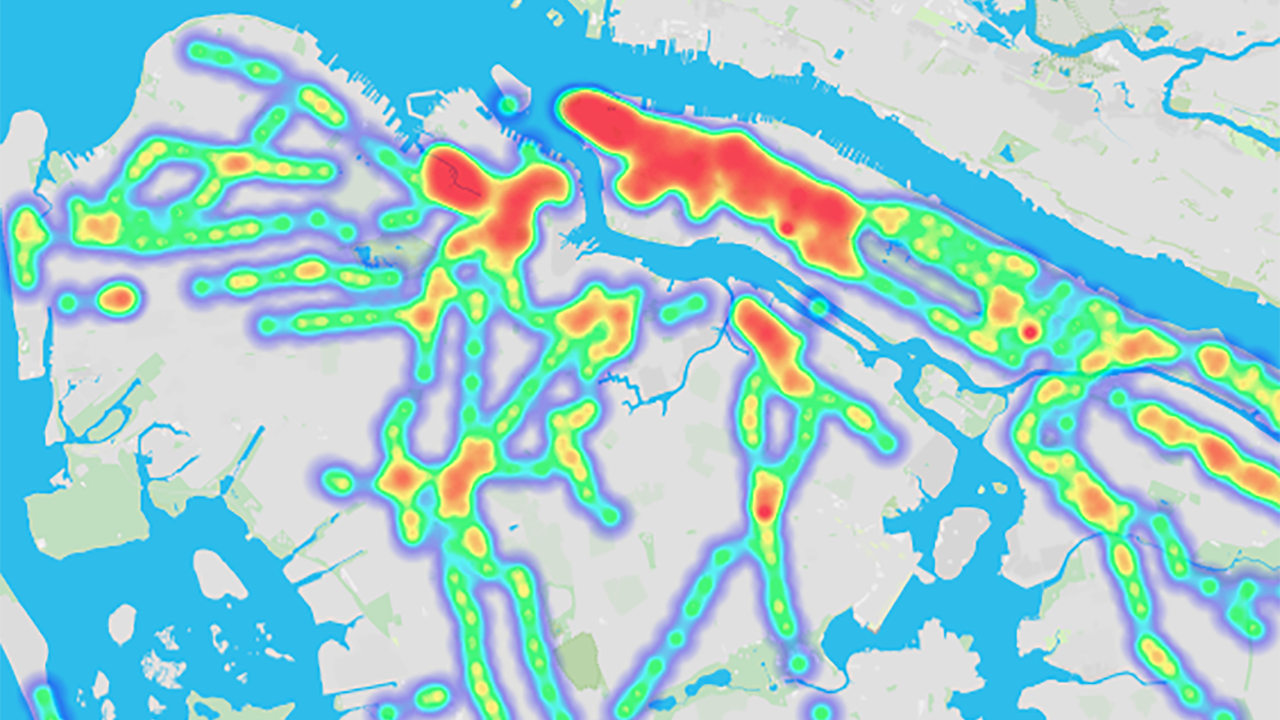A fascinating new study by geneticists at Weill Cornell Medical College has mapped the genetic material found in 466 of New York City’s subway stations. This is the first study ever to offer a comprehensive look at the microbiome of a sprawling metropolis — one that supports 5.5 million commuters a day on average — and the results are astounding.
Researchers found 562 species of mostly harmless or unidentified bacteria, reports the Wall Street Journal, where the pathogen map was published. However, they also found traces of 67 harmful bacteria, including those associated with the bubonic plague, meningitis, and UTIs (however, they exist in such low quantities that they are unlikely to infect you). Perhaps more interestingly, only 0.2% of the DNA sampled was human, and nearly half of the DNA was unknown. A total of 15,152 life forms were detected. No two subway stations were exactly the same.
At a time when a record number of people are riding the city’s mass transit system, the study could not be more relevant. Christopher Mason, a lead author of the study, tells the New York Times:
“People don’t look at a subway pole and think, ‘It’s teeming with life,’ ” said Dr. Christopher E. Mason, a geneticist at Weill Cornell Medical College and the lead author of the study. “After this study, they may. But I want them to think of it the same way you’d look at a rain forest, and be almost in awe and wonder, effectively, that there are all these species present — and that you’ve been healthy all along.”
Here are all the subway stops, for example, where a bacteria associated with meningitis was found:

The Wall Street Journal reports on the be DNA from living things you might expect to find:
Among the DNA of higher organisms, the researchers found across the system that genetic material from beetles and flies was the most prevalent—the cockroach genome hasn’t been sequenced yet so that DNA wasn’t identified. Cucumber DNA ranked third—possibly from lunch leftovers, or from the computer grouping partial DNA from other plants into the nearest known species.
Human DNA ranked fourth. The genetic leavings of mice, fish and lice were commonplace. (The fish DNA is likely swept in on the 14 million gallons of water that city crews pump out of the subways every day.) In some stations, about 15% of that higher order DNA belonged to rats.
Here is the more dangerous stuff you didn’t want to find:
Among the pathogenic and infectious bacteria, the Cornell researchers identified DNA related to strep infections at 66 stations and urinary tract infections at 192 stations. They found E. coli at 56 stations and other bacteria related to food poisoning at 215 stations.
A multidrug resistant bacterium called Stenotrophomonas maltophilia, associated with respiratory ailments and hospital infections, turned up at 409 stations. Another antibiotic resistant infectious microbe, called Acinetobacter baumannii, turned up at 220 stations.
At spots in three stations—on a garbage can, a MetroCard vending machine and a stairway railing—they also turned up traces of the bacteria that cause bubonic plague. While common among rodents in the western U.S., plague infections are extremely rare along the Eastern Seaboard. It has been 12 years since a human case has been diagnosed in New York City, according to the U.S. Centers for Disease Control and Prevention.
Researchers have been swabbing and testing the DNA for 18 months with the hope that it will serve as a baseline for the city’s health, and can be used to develop a “pathogen monitoring ‘weather map'” that can alert the city of potential outbreaks. The pathogen map has profound effects for the fields of public health and urban planning. James Kaufman, manager of the Public Health Research project at IBM’s Almaden Research Center in California, told the Wall Street Journal, “If you can sequence a city, you can sequence anything and everything.”
(Image: PathoMap)



